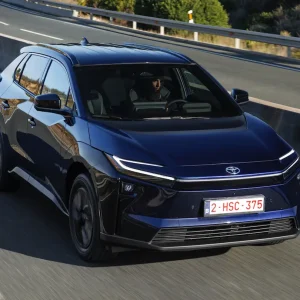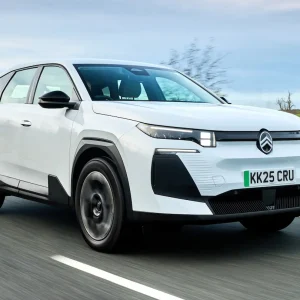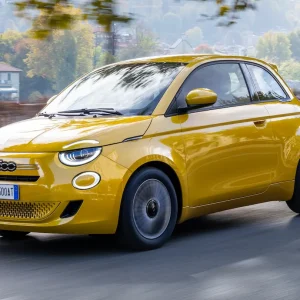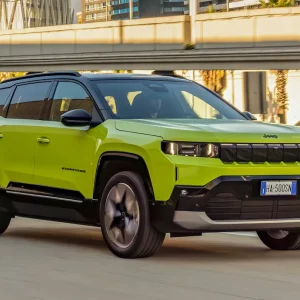A lack of financial incentives and significant investment in future infrastructure: we could be talking about the government’s transport policy but we’re not. We’re talking about the hurdles that need to be overcome for cars like Toyota’s hydrogen-fuelled Mirai to have any chance of success.
Powered by the latest-generation fuel cell technology, highly pressurised hydrogen gas is split into protons and electrons, then the latter is forced through a closed circuit, producing an electric current that powers an electric motor. At the end of the process, the electrons are reunited with the protons and exit the system as a stream of clean H2O vapour.
Sound too good to be true? Well, there are third party considerations, as creating hydrogen requires electricity, so unless this is generated via renewable sources there are CO2 emissions associated with the production process. Then again, how many of us stop to consider the emissions created by converting rare earth metals for battery production or transporting and refining fossil fuels?
One advantage the Mirai has over an EV is filling its tanks only takes around five minutes at a traditional fuel station – provided you can find one.
There are currently only 14 hydrogen filling stations in the UK, so it’s just as well that the Mirai has a claimed range of 400 miles.
Although this second-generation Mirai is considerably cheaper than the original, as much as £13,000 depending on trim, hydrogen costs are extremely high. Prices are typically somewhere around £12 per kg – hydrogen is measured in kilos rather than litres – so it will cost around £68 to fill the Mirai’s three tanks.
Of course, not only will a Tesla Model 3 Long Range be cheaper to buy or lease, it will also give you a 360-mile range for about the same price as a single kilo of hydrogen. What’s more, it can be topped up from one of Tesla’s ubiquitous chargers in around 30 minutes, so you don’t have to spend too much downtime sitting in a soulless service station.
To boost sales in the US, Toyota has previously given away $15,000 (£11,000) worth of fuel credits with each Mirai. Although there are no plans to offer similar incentives here, leasing rates from around £434 per month (excluding VAT and including maintenance) will go some way to sweeten the deal.
So much for the science and the fiscal implications, as a vehicle to travel in, the Mirai is a bit of a mixed bag.
From a refinement perspective, it’s difficult to fault. Emitting no more than a typical electric motor whirr, it goes down the road in a serene fashion with minimal suspension noise and a ride quality smooth enough to shame many a luxury car.
Granted, the overall performance feel isn’t in the same ballpark as a Tesla, but the 180hp produced from the rear axle-mounted motor does allow the Mirai to zip past slower-moving traffic with zero drama and it feels totally relaxed at motorway speeds.
Perhaps the biggest drawback to the driving credentials is the substantial amounts of mass involved. Although most of the weight is carried low down, at just shy of 2.0t, you certainly notice high levels of inertia when trying to coax the Mirai into sweeping bends – a trait that is made even worse by the slow responses of the steering.
It is also a bit of a beast to stop, something that isn’t helped by a wooden brake pedal feel.
Given the Mirai rides like a limo and is almost 5.0m long, it is doubly disappointing that the accommodation is so compromised. There’s nothing wrong with the overall fit and finish; the bold instrumentation, large central screen and subtle flip-flop metallic black trim finish give a suitably techy feel. The materials used throughout are also pretty plush and better than anything you’ll find in a Tesla.
More disappointingly, although the Mirai is officially a five-seater, the rear legroom is tight and an enormous central tunnel, necessitated by the location of the central hydrogen tank, is so high and wide you’ll need to be pretty bow-legged to perch there.
Boot space is also very tight, not so much width-wise as front to back. At 321-litres it is even smaller than a VW Polo.
With China enjoying a controlling monopoly of the world’s rare earth metals, an essential component for large battery production, we understand why there are intense geopolitical pressures to become less reliant on EVs by developing alternatives. As things stand, however, the Mirai’s numbers will not stack up for many.
Toyota Mirai Design Plus Pack
P11D: £53,945
Residual value: TBC
Depreciation: TBC
Fuel: TBC
Service, maintenance and repair: TBC
Cost per mile: TBC
Fuel consumption: 0.79 kg per 62 miles
CO2 (BIK %): 0g/km (1%)
BIK 20/40% a month: £9/£18
Luggage capacity: 321 litres
Engine size/power: Polymer electrolyte fuel cell and electric motor/180hp





